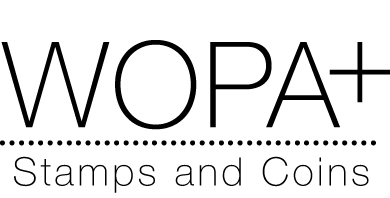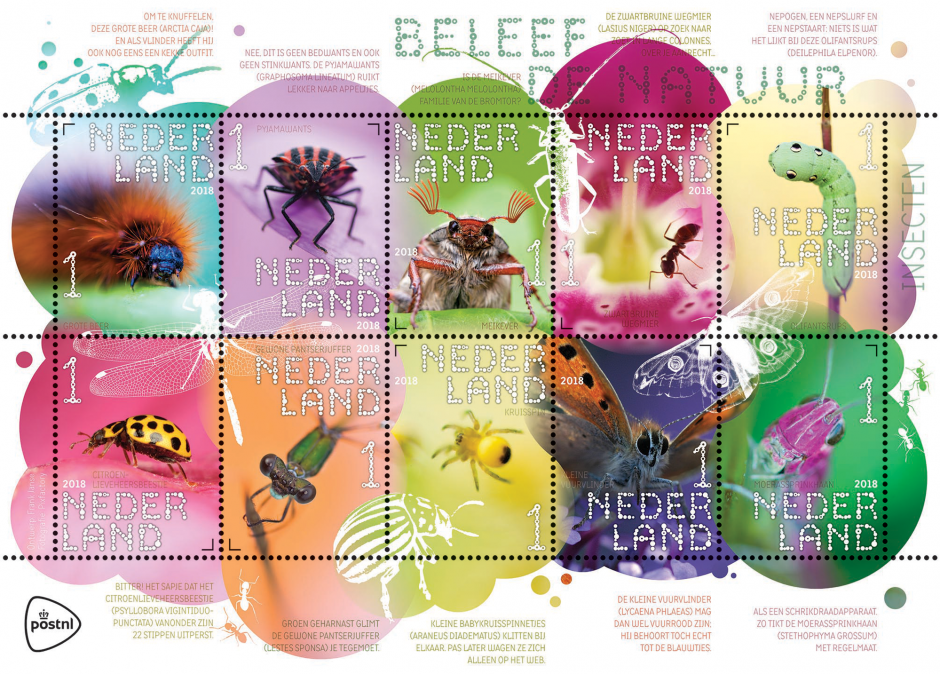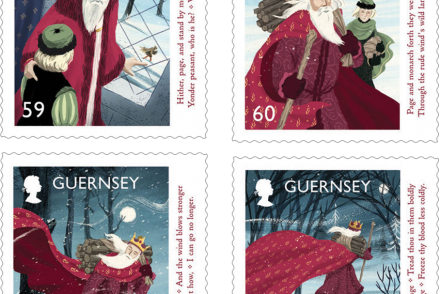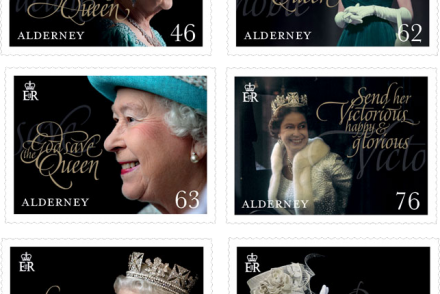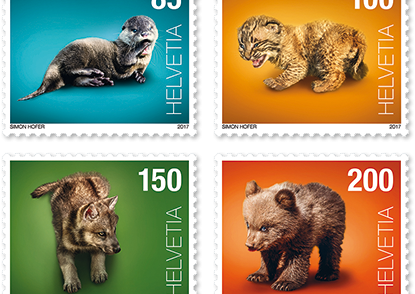Experience Nature – Insects
Netherlands – On 4 June 2018, PostNL will be issuing Experience nature – insects, a sheetlet of ten stamps in ten different designs. The stamps are marked ‘Nederland 1’, the denomination for items up to 20g in weight destined for delivery within the Netherlands. The issue is part of the new Experience nature series, which consists of four stamp sheetlets with a total of 40 stamps, organised by season. The third stamp sheetlet, Experience nature – insects, is inspired by summer. Earlier this year, stamps with reptiles and amphibians appeared for the winter (2 January) and with wild flowers for the spring (9 April). The final sheetlet in the series will feature mushrooms, inspired by autumn, and will be issued on 17 September 2018. The photographs adorning the stamps come from the photography production company PIXFACTORY. Sheetlets will be priced at €8,30 when bought separately, with the whole series available for € 33.20, including a storage folder with mounts.
The Experience nature – insects stamp sheetlet depicts ten insects you could come across in the Netherlands. Insects, with almost a million different identified species, are by far the largest group of animals on earth, and many hundreds of thousands, or even millions, of further species are expected to exist, though they have never been found. The name, insects, refers to one of the group’s key shared features: their bodies are split into three parts. Most insects live on the land and in fresh water, with only a handful of them living in the sea. Some insects play a direct role in our lives, by transmitting diseases and eating our harvests, for example, but also by collecting honey and pollinating the crops that give us our food. Because of the enormous number of different species, insects reproduce and develop in myriad ways, and the same can be said for their methods of camouflage or defence. The following ten insects feature on the Experience nature stamps: the garden tiger moth, minstrel bug, cockchafer, black garden ant, elephant hawk-moth caterpillar, 22-spot ladybird, emerald damselfly, diadem spider, small copper and Marsh grasshopper.
On the Experience nature – insectsstamp sheetlet, designed by Frank Janse from Gouda, each of the ten insects is depicted on its own stamp. The photographs used are ‘portraits’ of the selected insects in their natural surroundings, often with a shallow depth of field. Most of the photos flow unnoticeably onto the adjacent stamp, suggesting that all insects live in the same habitat side by side, although this is not actually true. The pictures are contained in a graphical layer of overlapping circles of different sizes that break through the boundaries provided by the perforations. The circle pattern continues in the form of small droplets on the edge of the sheetlet and the tabs. A layer of transparent images of several other insects is superimposed over the circles (red asparagus beetle, musk beetle, dark whiteface dragonfly, small emperor moth, colorado beetle and black garden ant). These insects are depicted in an almost abstract manner, in monochrome shades. For the typography, Frank Janse devised his own font built up out of small circles, which he named Fdot. For the explanatory texts on the edge of the sheetlet, he used TT Milks Light and Demibold in capitals (2017, Ivan Gladkikh for Typetype).
Designer Frank Janse from Gouda was asked to design the Experience nature stamp series using photographic material from PIXFACTORY. This photographic production company collects photographs sent in by amateur photographers and nature lovers with a photographic bent. The associated websites naturepix.nl and birdpix.nl are extraordinarily popular, featuring hundreds of thousands of nature photographs.
Mysterious and elusive
Coincidence or not – the subject of the new Experience nature stamp series is particularly interesting to graphic designer Frank Janse. “Of course, a designer has to be able to work with any theme. However, being asked to design something that is so closely connected to what you love is very special. I’ve been enormously interested in nature since I was young. I’m fascinated by the fact that everything just goes its own way. It’s a world in itself, with many layers. Underground, on the surface, in the water, in the air – in other words, everywhere. From huge to tiny, with all kinds of intriguing details that you only see if you look closely. Under a stone, for example. My interest has everything to do with the mystery and elusiveness of nature. I encounter the same thing when I go wild camping with my family on our holidays. We always try to get deep into nature and live as primitively as possible, with as little civilisation as possible in your luggage.
Observe and associate
Janse first determined the scope of his design by deepening the concept of ‘experience’. “For me, an experience is made up of observation, sensory evaluation and then association, by looking at how you feel when you see a certain plant or animal, in this case an insect. Is it cold and expressionless? Is it fluffy and vulnerable? Is it dangerous and venomous? On the one hand, experiencing means actually registering and organising what you perceive with your senses. On the other hand, it means subjective association, which happens organically and intuitively.”
Sensory and intense
Based on these starting points, Janse chose photos with an intense, sensory character from PIXFACTORY’s enormous database. “It had to be more than just an image, more than just visually beautiful. It had to tell an interesting story, as well. I had to discard gorgeous photos of uninteresting insects, as well as interesting bugs that simply didn’t photograph well. When I say beautiful, I don’t mean this in a purely aesthetic sense. The photos could also be provocative, the image they showed abrasive. At the same time, I looked for a balanced spread of insects in terms of colours, sizes and appearences.
Organic process
Janse selected around a thousand photographs for the Experience nature – insects stamp sheetlet, narrowing it down to a shortlist consisting of around a hundred images, from which he chose the ten photographs that made it onto the stamps. Janse: “The selection was as organic a process as nature itself. I was looking for more than just individually great photos: they also had to go together well. I was engaged in an endless process of moving the photos around, enlarging, reducing and cropping them. Insects, I always call them animals with hinges, are naturally beautiful animals that typically have rather remarkable tentacles. They’re expressionless, they can’t smile. And they can also be very opportunistic. Insects can exhibit strikingly collective behaviour as well, as with the ants that sacrifice themselves for the good of their fellow ants. It fascinates me to see all the places they have made into their home. I also incorporated some rather rare species on the sheetlet, such as the red asparagus beetle. Or the dark whiteface dragonfly, which only occurs in one place in Friesland. I selected the colours to represent a summertime feeling – surreal shades created by harsh sunlight. I wanted the background to be out of focus, so that all the attention would be directed towards the insect. The photos also had to be zoomed right in on the insects, just like Alice in Wonderland. I found myself thinking of that book a lot, during the process.”
Layered design
In his layered design, Janse uses a combination of circles to reflect the dynamic and organic aspect of nature. They form something like thought clouds, strengthening the sense of movement and the associative character of the photographs. “This enabled me to break through the static grid of the stamp sheetlet. To do so, I chose round, natural shapes, because I associate sensory perception with roundness. Think of round eyes and round taste buds, for example. Finally, I added another white layer featuring other insects, emphasising the structure, shape and diversity of insects. It intensifies the mysterious character of nature. The layers also relate to how I look at nature: not just emotionally and holistically, but also with an eye for detail, as a sum of all my sensory perceptions.”
About Frank Janse
Frank Janse (1967) received his degree in graphic design from the Willem de Kooning Academy in Rotterdam in 2001. Until 2009, he worked for various advertising and design agencies, including Room for ID’s, after which he started his own company: Frank Grafisch Ontwerp in Gouda. Frank Janse is an expert at creating house styles, branding, infographics and communication campaigns. He works for a wide range of educational institutes, among others, and works on both business-to-business and business-to-consumer projects. His clients include PostNL, real estate specialist Fortierra, the Association of Dutch Municipalities, The Hague Centre for Advice in Education, the University of Amsterdam/Amsterdam Medical Centre, Erasmus University and Rekel Producties. Frank Janse has previously designed various luxury storage systems and personal stamps for PostNL, including the 2017 theme collection on Dutch.
- 04.06.2018
- Frank Janse, Gouda
- Joh. Enschedé Security Print, Haarlem
- Offset
- cyan, magenta, yellow and black
- 30 x 40 mm
